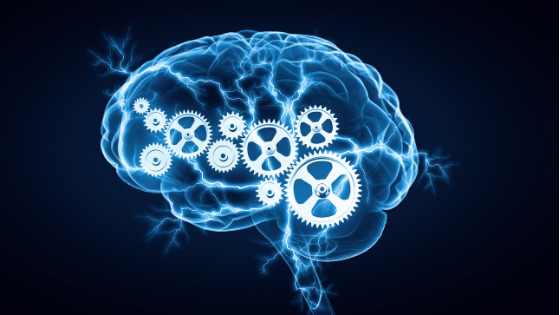Millions of low-income Americans face a significant justice gap. A 2022 survey found that 92% of civil legal issues reported by low-income individuals received little or no legal assistance. These are not minor concerns—they involve critical matters such as evictions, custody disputes, and debt collection, which can determine whether someone remains housed, retains custody of their children, or avoids financial devastation.
In a previous blog, I explored how the digital divide limits access to justice in rural and low-income communities, particularly when it comes to remote court proceedings. A similar gap exists in the legal world. While not everyone has consistent access to the internet or digital devices, many people do have intermittent access through smartphones, libraries, or community centers.
For these individuals, a growing field of technology-driven legal tools is stepping in to help. These platforms can’t replace lawyers, but they provide vital support—helping users understand their rights, complete legal forms, and navigate complex court procedures. While not a substitute for full legal representation, they offer a critical lifeline when the only other option is facing the legal system alone.
Tech Tools
Across the country, public and private initiatives are exploring new ways to make legal support more accessible—especially for those who can’t afford an attorney. These efforts range from AI-powered chatbots to step-by-step guides that help users complete legal forms. While their capabilities vary, each tool is designed with the same goal: to assist people who need help navigating the legal system.
LawHelp Interactive
LawHelp Interactive (LHI) is a free, nationwide online platform that helps individuals prepare legal documents through a simple, interview-style process. Users answer plain-language questions about their legal situation, and the system generates properly formatted documents ready for printing, e-filing, or sharing with a court or attorney. In addition to document preparation, LHI offers resources tailored to the user’s legal issue, including links to relevant government websites at both the state and federal levels.
Utah’s Online Dispute Resolution (ODR) Platform
This is one of several court-sponsored tools that are already transforming how people access the legal system. Designed for small claims cases, the platform enables parties to resolve disputes entirely online—without ever entering a courtroom. Users can file claims, communicate with the opposing party, negotiate settlements, and even participate in virtual hearings, all through a streamlined digital interface. By reducing default judgments and increasing efficiency, Utah’s ODR model stands out as a leading example of how technology can enhance access to justice.
LawDroid
LawDroid is an AI-powered legal assistant that uses chat-style bots to help users navigate legal tasks. Users can upload files for research and summarization, draft legal documents such as wills or contracts, compare documents, and ask legal questions. In essence, it functions like a ChatGPT specifically designed for legal support.
Why These Tools Matter
Technology-based legal tools offer several key benefits—especially for individuals who would otherwise have to navigate the legal system on their own. Chief among these is accessibility. Tools like LawDroid and court-sponsored platforms provide 24/7 support, allowing users to access legal information and complete documents without needing to visit an office or pay costly hourly fees.
Court-sponsored platforms are a major step forward. Their primary goal is to serve the public, and one of the most effective ways to do that is by keeping people informed through user-friendly, easily accessible websites.
These tools are also typically low-cost or free, helping to break down financial barriers. Court portals and nonprofit-developed apps often provide guided legal assistance at no charge, while AI-driven platforms use affordable subscription models that are far less expensive than hiring an attorney. In addition, legal technology promotes both efficiency and self-reliance—giving users access to forms, answers to basic questions, and information about their rights, all in one place. This not only simplifies the process but also helps users feel more confident and in control.
What to Keep in Mind
When using AI-powered chatbots like LawDroid, it’s essential to understand how your data is stored and protected. Privacy is key—ideally, these tools should store minimal personal information and ensure that your data remains secure.
Accuracy is another critical concern. Of all professions, the legal field demands the highest level of precision. Many of us have seen AI tools like ChatGPT occasionally provide incorrect or misleading information. That’s why it’s important to verify any legal guidance received through these platforms—always double-check for accuracy before taking action.
The digital divide also remains a real barrier. While these tools can be incredibly helpful for people struggling to access legal support, many individuals who need them most may still lack internet access or digital literacy. And for those who do have access, it’s important to remember that these tools are not a full replacement for professional legal help. In complex cases, hiring an attorney is always the best course of action. That said, for basic legal needs, these tools offer an excellent starting point.
Looking Ahead: What This Means for the Justice System
The rise of technology-driven legal tools marks a promising step toward narrowing the justice gap in the U.S. While these tools are not a complete solution, they provide a critical bridge for individuals who might otherwise receive little or no legal assistance. Whether it’s understanding their rights, completing legal forms, or navigating court procedures, these platforms empower users to take the first step.
To truly close the justice gap, courts must take a more active role in expanding and supporting these digital solutions. This includes investing in user-friendly online portals and guided form systems that meet people where they are—particularly those with limited legal knowledge or inconsistent internet access. By partnering with nonprofits and technology developers, courts can help ensure these tools are legally accurate, available in multiple languages, and seamlessly integrated into judicial processes.
Ultimately, the goal is not to replace lawyers, but to create a more inclusive and accessible legal system—one where no one is left to navigate it entirely on their own. With thoughtful leadership and collaboration, the justice system can harness technology to enhance access to justice for all.



.jpg)


.jpg)
.jpg)
.jpg)
.jpg)
.jpg)


.jpg)
.jpg)
.jpg)
.jpg)
.jpg)
.jpg)
.jpg)
.jpg)

